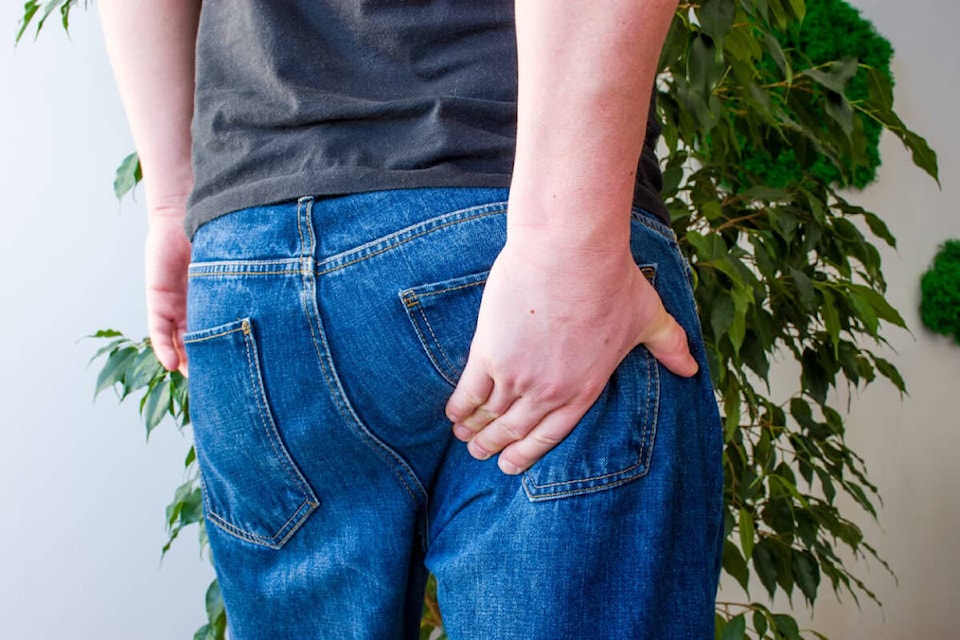CHERYL WITTER
FOR THE MORNING STAR
The famous piriformis muscle. Physiotherapists, chiropractors and massage therapists all dig their elbow into this beauty many times a day.
It can be a real “pain in the butt.” Literally and figuratively.
Your piriformis muscle is located deep inside your buttock. Underneath your Levi jean pocket.
It runs from the sacrum bone to the outside of your hip. The sciatic nerve can pierce the piriformis or run under or over it.
When the sciatic nerve is involved it’s called “Piriformis Syndrome.” This is actually very rare.
The majority of the time the piriformis muscle is in spasm for other reasons. It is much more common to find that it is irritated by an injury/issue nearby.
The tight piriformis is just a symptom of something else brewing.
If you want to get rid of this crampy, tight, achy butt you have to address the true cause of your pain. Unfortunately, Dr. Google will be of no use here.
You will need a live human health care professional to listen to your symptoms and do some test movements to help establish the cause.
So what causes this muscle to go into spasm and become such a pain in the butt?
The list is long:
* Spinal dysfunction of the lower back L4/5 vertebrae segments. These lower facet joints can become stiff, irritated and inflammed and the piriformis likes to react to this.
* Leg length discrepancy; long leg or short leg.
* Foot problems such as flat, mobile feet or high arched, rigid feet.
* Weakness or imbalance in your hip joints, particularly glut medius.
* Prolonged periods of sitting particularly if you add the impact of a fat wallet. This is no joke. By sitting on your wallet pressure is placed on the muscle and sciatic nerve.
* Postpartum pelvic instability.
* Incomplete rehab of post-op hips, knees or spine.
* Prolonged intense athletic training or sudden high-intensity exercise (see this a lot with skate skiers and kickboxing-type fitness).
* The most common cause I see is a sacroiliac joint dysfunction. The SIJ is very prone to injury and biomechanical dysfunction. Because this muscle lays overtop of this joint and plays a role in sacral movement it is first in line to become tight and reactive.
That is a lot to sort through, so it’s imperative that a detailed history and examination is given.The cause must be uncovered.
It’s not wise to keep rolling, stretching and sitting on a tennis ball if you aren’t getting to the root of the matter. Our job as manual therapists is to solve this puzzle and tackle the proper treatment. Our toolbox is varied and ready for the challenge.
Your road to recovery may involve the following:
• joint mobilization/manipulation to restore mobility and function in your sacroiliac joints and lumbar facet joints;
• stretching to improve strength and flexibility in your piriformis and hip abductors, and support deep core and spinal stability;
• exercises to help restore alignment in your feet and lower legs which may also be supported by wearing orthotics;
• dry needling and massage to help relieve pain and muscle spasms and increase blood flow to reduce inflammation and aid healing; or
• foam rolling, tennis ball massage, self-care instructions.
Simple ending to this story? Don’t keep hammering at the poor piriformis muscle. Digging at it is good, but better digging needs to be done to find the real problem.
Cheryl Witter is a physiotherapist and the owner of Spine and Sports North End Physical Therapy and Massage Therapy

